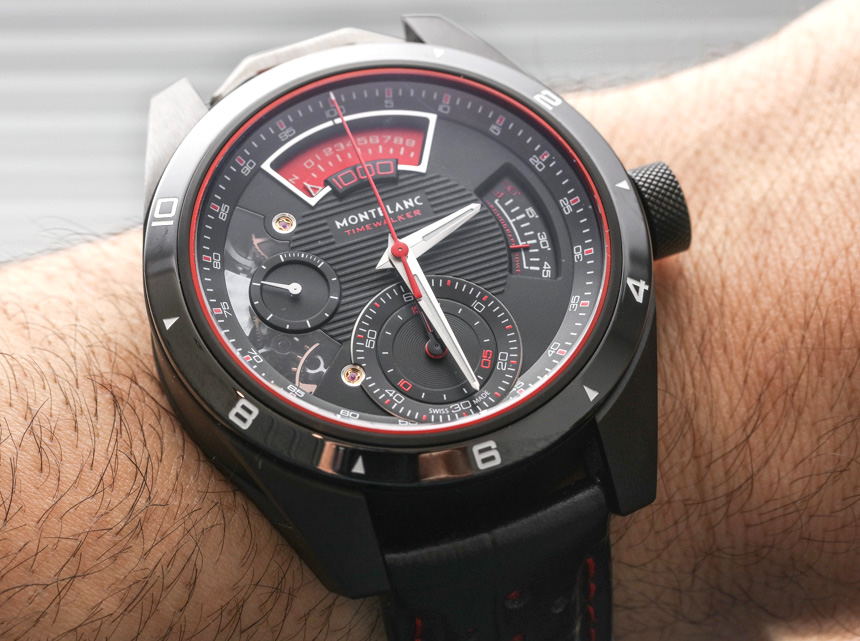
Ever since Jérôme Lambert took the reins in 2013, Montblanc has really become a brand to watch whenever SIHH comes around. For the past few years, Montblanc focused on releasing bang-for-buck watches, and a fine example is the Montblanc Meisterstuck Heritage Perpetual Calendar which, at €10,000, was one of the most affordable perpetual calendar watches you could buy. That was followed by the Heritage Chronométrie Chronograph Quantième Annuel, a watch that combined the chronograph and annual calendar complications and could be had for €9,500 in steel. For 2017, the focus is on the racing-inspired TimeWalker collection, and while there’s no shortage of more simple and affordable pieces also introduced, the TimeWalker Chronograph 1000 Limited Edition 18 you see here is a bit more special.
The first thing you must know is that this is a marvelously complex watch, with a movement that has two separately functioning parts: one dedicated to timekeeping and a dedicated chronograph mechanism. The chronograph can measure events up to 1/1000th of a second, which is really impressive even if there have been watches before that can time events to even smaller intervals – such as the TAG Heuer Mikrogirder 2000. Holding two patents and 22 auxiliary patents, this is Montblanc tapping into its Minerva manufacture’s capabilities and making sure the industry takes note. I’ll also warn you now, it’s expensive, well-into-six-figures expensive.
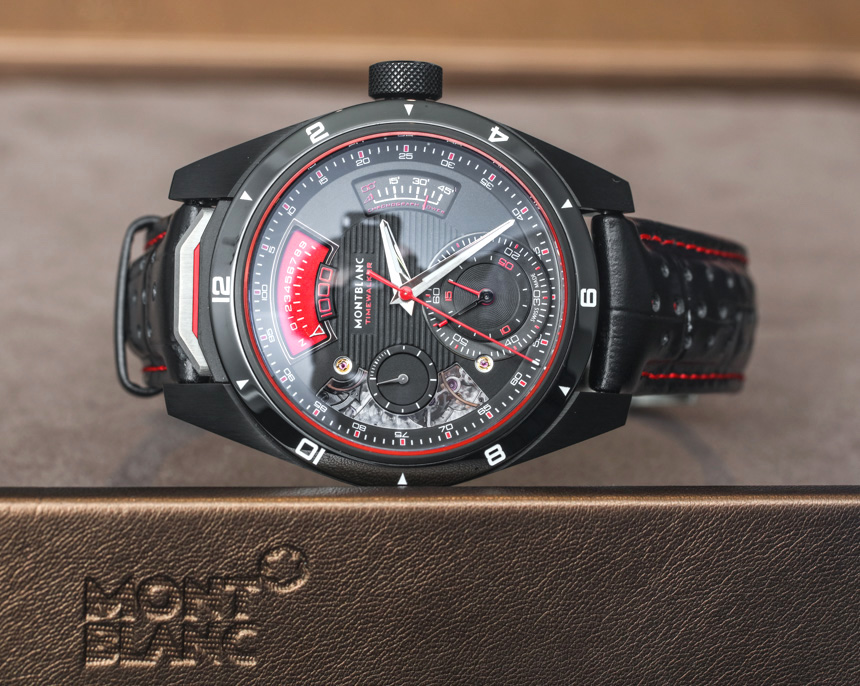
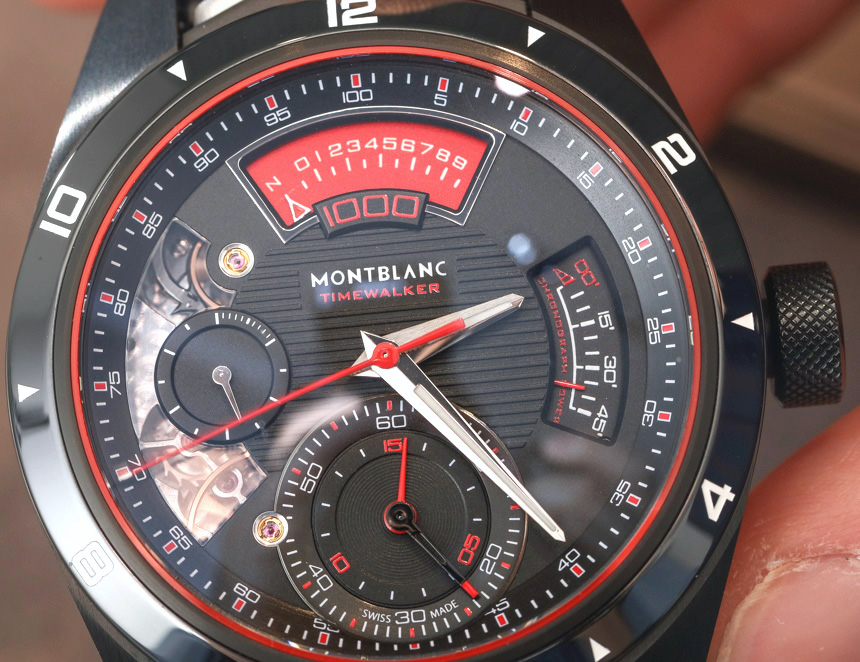
So, let’s cut to the chase first. How do you read the chronograph? At 6 o’clock, you have a double counter that records the elapsed whole seconds (1 to 60) and the elapsed minutes of up to 15 minutes. The red central seconds hand shows time of up to 1/100th of a second. It moves around the dial once every second and the time can be read off the 1/100th-of-a-second scale on the flange. An interesting thing about it is that it actually moves in 1/100th-second increments, meaning to say that it jumps forward once every 1/100th of a second and makes 100 tiny jumps across the dial, as opposed to spinning freely.
To find out the time to 1/1000th of a second, you have to look at the red aperture at 12 o’clock. It doesn’t move when the chronograph is running, but instead, a pointer jumps into place to point out the 1/1000th-second measurement when the chronograph is stopped. When it is at rest, it points to “N,” which represents neutral – a nod to the watch’s racing inspiration. It is really easy to read.
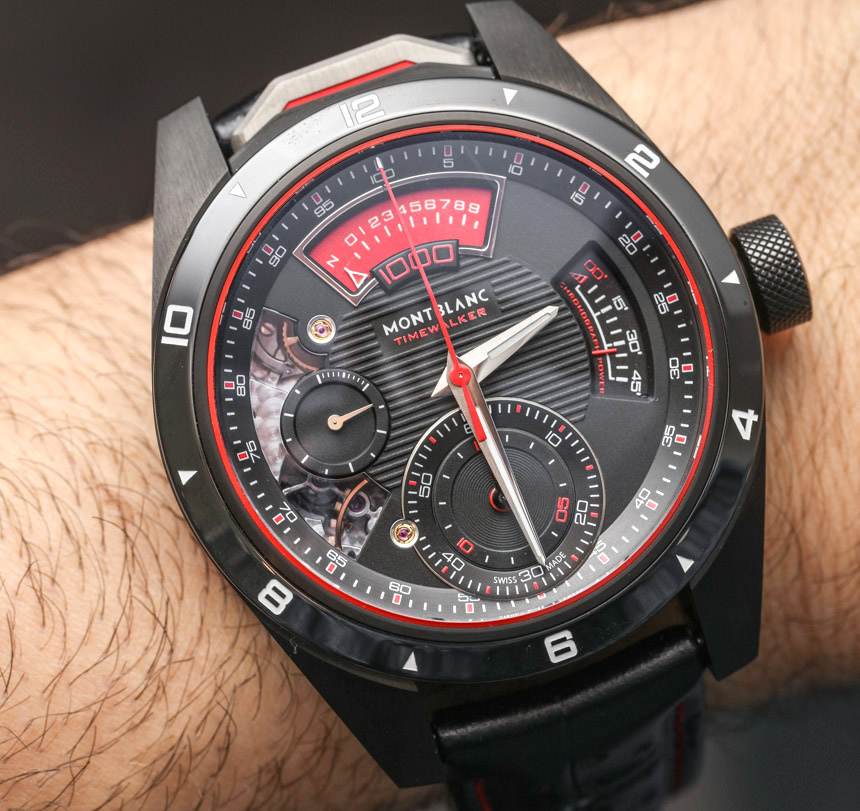
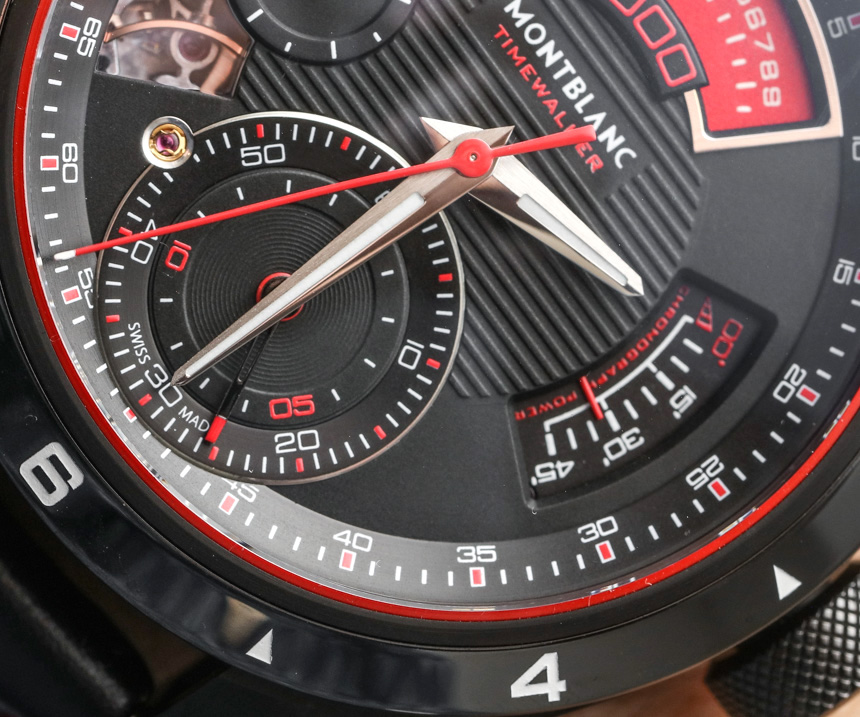
As for the dial, it is actually really clever, considering the watch’s unusual functions. The dial is black, and in the center, there are horizontal indentations. Time is read centrally off the silvery-white dauphine hour and minute hands, and they contrast sharply against the black dial. At 9 o’clock, you have a subdial with the running seconds. Flanking the running seconds subdial at 8 and 10 o’clock are the two partially visible balances of the movement. At 8 o’clock, you have the large timekeeping balance with 18 screws that swings at a traditional and leisurely rate of 2.5Hz or 18,000 beats per hour. At 10 o’clock, you have the smaller balance that runs at an incredible 50Hz or 360,000 beats per hour, which allows it to time events down to 1/1000th of a second. At 3 o’clock, you will find the power reserve indicator for the chronograph mechanism. And since the chronograph runs so quickly, power reserve is just 45 minutes when the movement is fully wound.
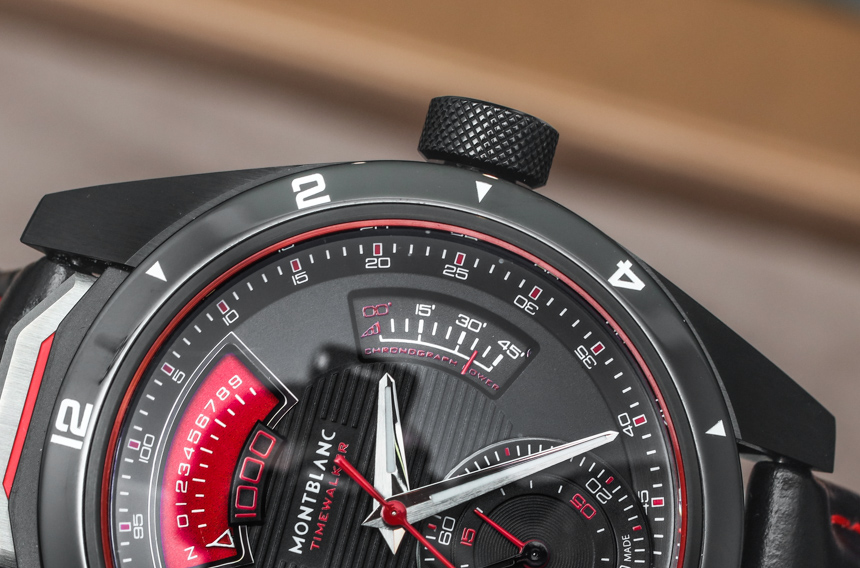
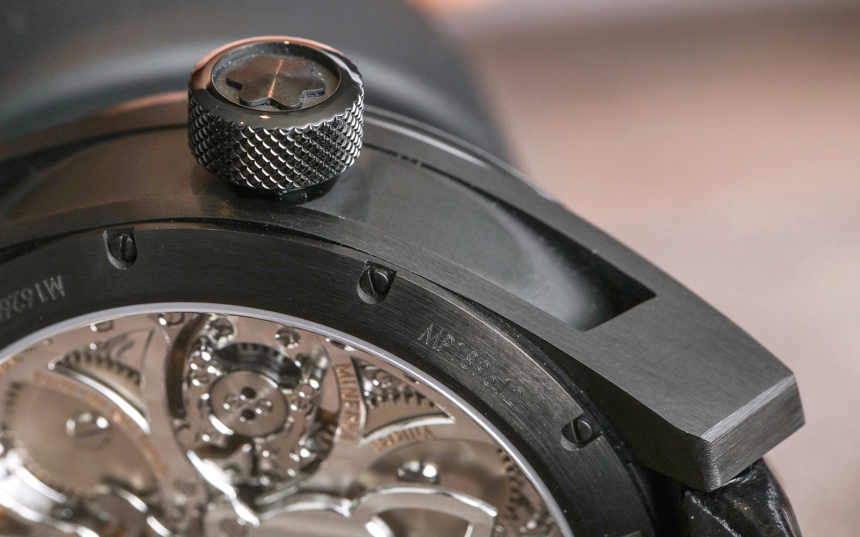
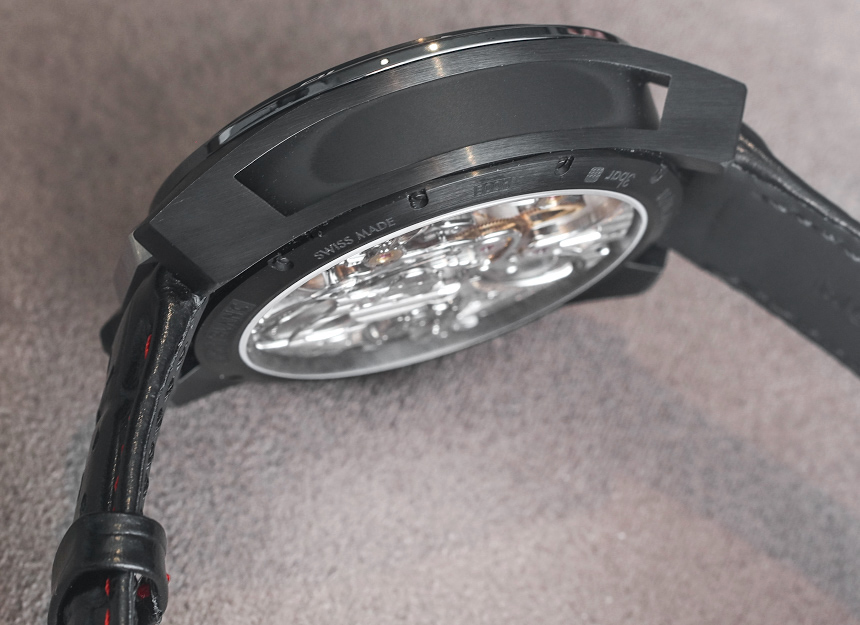
The case is 46.4mm wide and over 17mm tall. So, to keep it light and wearable, it is made out of titanium and given a black satinated DLC finish. In fact, we were surprised by how light it was when we first picked up the watch. Water resistance is just 30 meters, unfortunately. The fixed bezel is made out of black ceramic and features engraved Arabic numerals denoting the hours. There is no traditional tachymeter scale since the central seconds hand does not time the elapsed seconds (more on this later). It is also a pity that Montblanc didn’t make the bezel rotatable. Otherwise, it could be used to track time in another timezone as well.
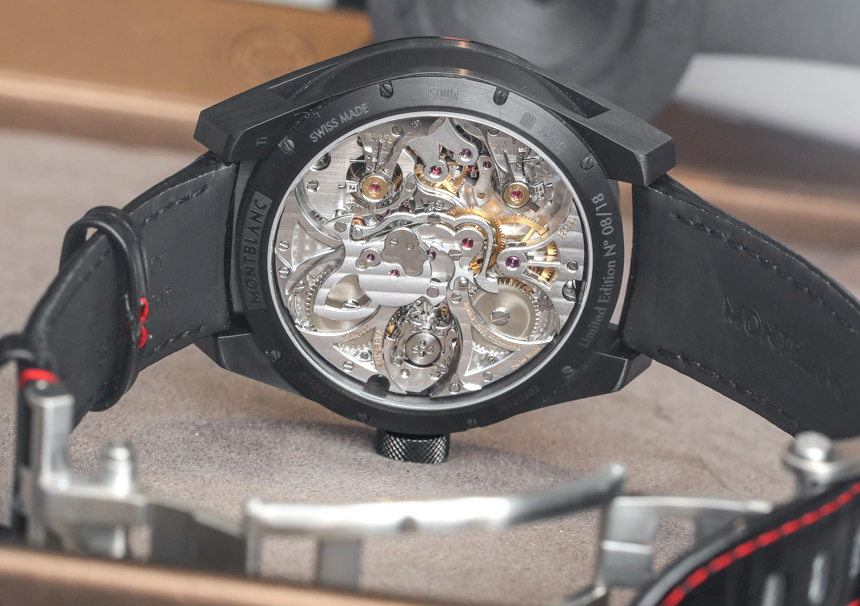
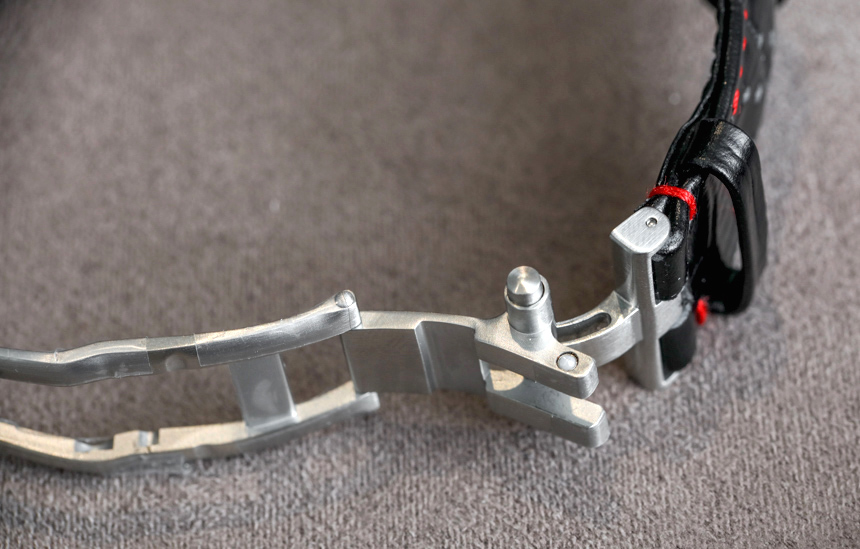
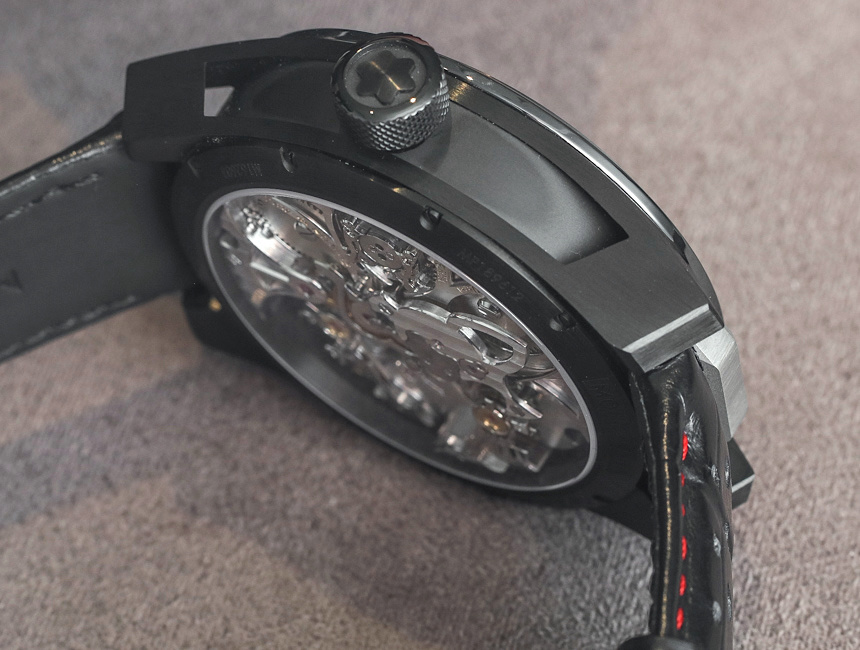
There are also a couple of other unique things about the case, the first is the semi-skeletonized lugs, which gives the watch a mean profile when looked on from the side. The second is the large knurled crown at 3 o’clock. There are no traditional chronograph pushers at 2 and 4 o’clock. Instead, the Montblanc TimeWalker Chronograph 1000 Limited Edition 18 has a single large titanium monopusher for activating the chronograph at 12 o’clock. The watch comes with a “racing-style” perforated leather strap with red stitching.
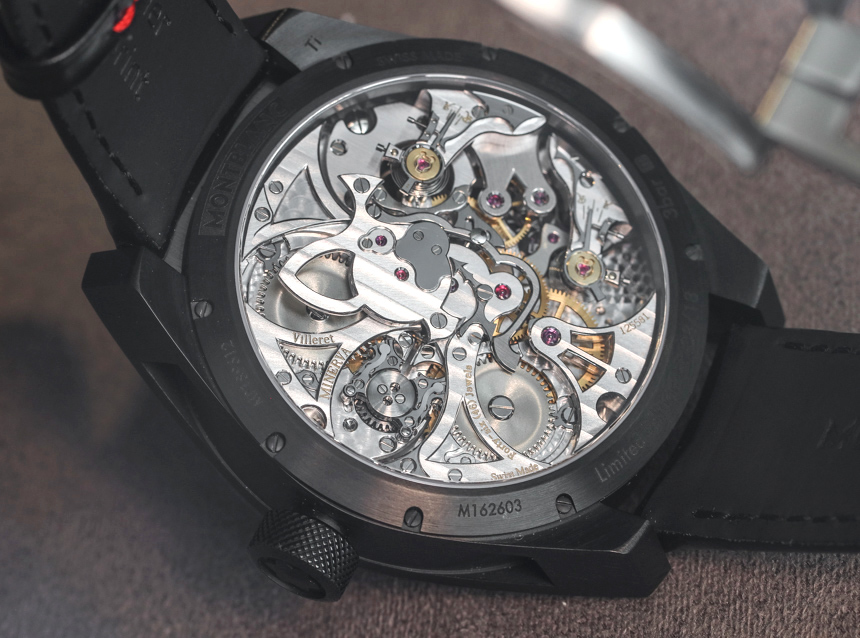
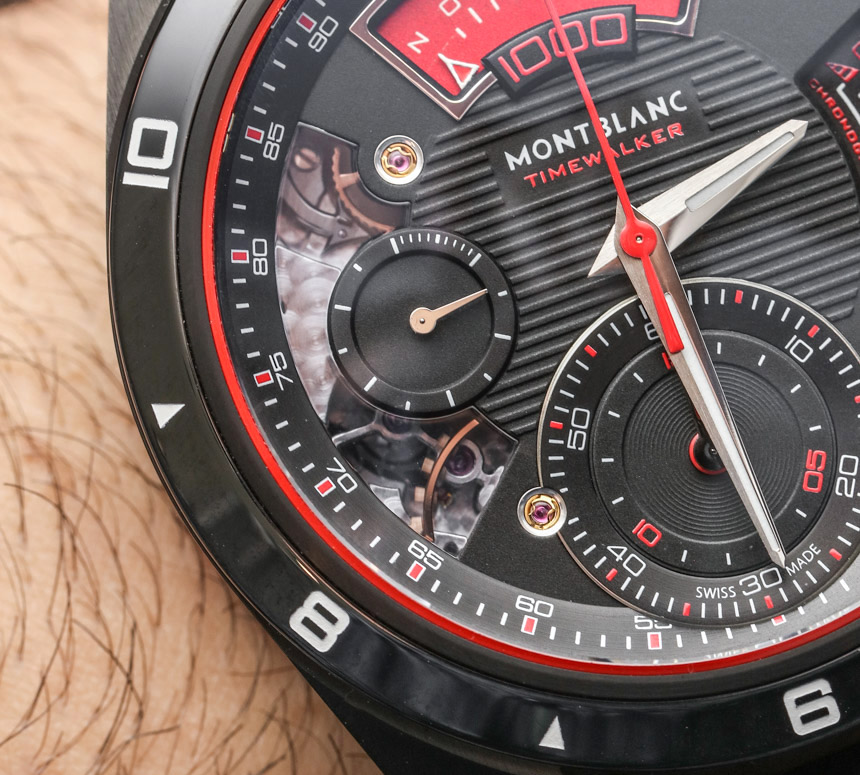

The movement is an in-house Calibre MB M66.26, and it is a 488-part, manually wound movement with independent going trains for timekeeping and the chronograph. You can see this clearly when you flip the watch over and gaze through its sapphire display case back. The movement bears the Minvera and Villeret markings and is expertly finished with circular graining on the bridges, hand-chamfered edges, and Côtes de Genève. Everything is polished and burnished and the movement looks like a million bucks.

As I mentioned earlier, the timekeeping balance swings at just 2.5Hz, so power reserve for the timekeeping is pretty long at 100 hours. For the chronograph mechanism, even though it has its own barrel wheel, there is only enough energy to keep it running for 45 minutes. However, the chronograph’s power reserve can be extended by winding the watch while the chronograph is running. This can be done by turning the crown counterclockwise. But remember, the elapsed minutes recorder only goes up to 15 minutes.
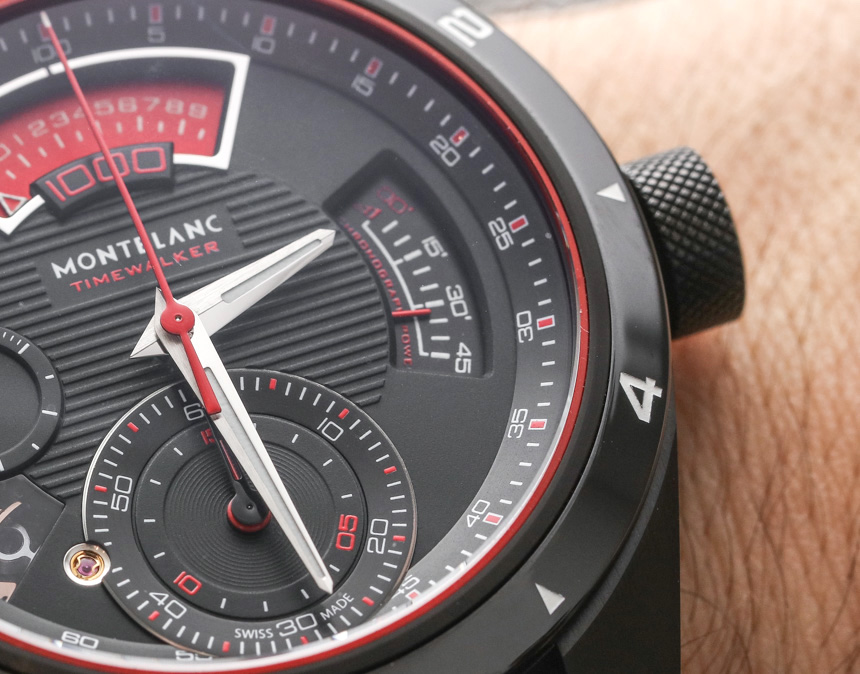
The chronograph is controlled by a two-level column wheel. The first level controls the whip to start, stop, and reset the seconds, minutes, and the thousandths of a second, while the other level guides the hammers to reset the seconds and the minutes. To allow the balance to swing so quickly, the size has been kept small and it is equipped with two hairsprings, one fixed on top of the other.
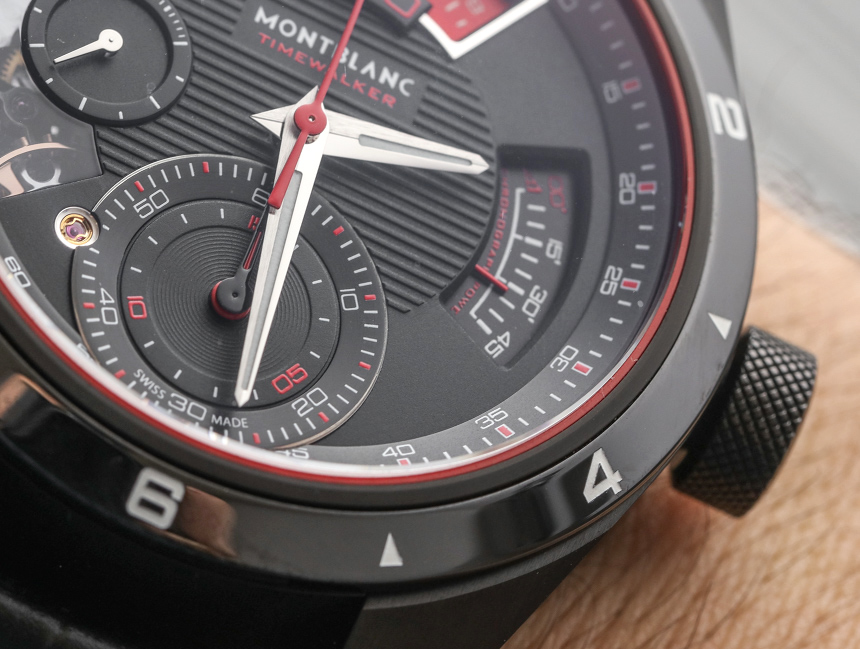
The TimeWalker collection is a celebration of automobiles, driving, and racing, and there isn’t a complication that encapsulates this better than a chronograph watch – and a chronograph that can time events down to 1/1000th of a second, even more so. Though the Montblanc TimeWalker Chronograph 1000 Limited Edition 18 isn’t the first watch in the world to be capable of the feat, it is surely one of the easiest to use and read, not to mention one of the most handsome. There will only be 18 TimeWalker Chronograph 1000 Limited Edition 18 watches produced and each is priced at 175,000 euros. montblanc.com
